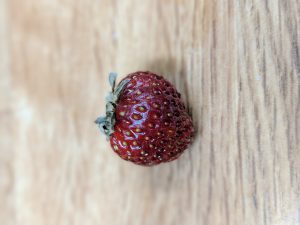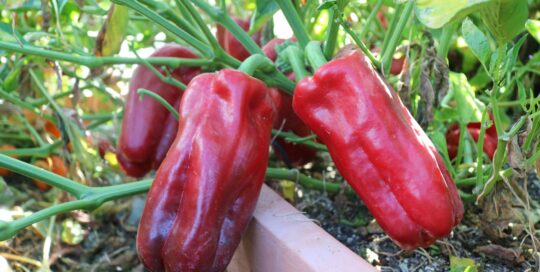Keeping a Healthy Strawberry Patch
Views: 4250

When I was a kid on the farm, we had a sizeable strawberry patch—about 10 yards by 20 yards—that produced gobs of strawberries every June.
We would have strawberries night and day for weeks. Strawberry rhubarb pie, strawberry shortcake, strawberries over ice cream, in our cereal. And, Mom would freeze a whole bunch of them to make into dessert sauces in the winter. Needless to say, there was a time in my early 20s when I didn’t eat strawberries for about five years. I’d had enough of them.
But, I got over it. When I secured my community garden plot about five years ago, I bought three or four plants of maybe two or three different types of strawberries. Can’t recall which, but I do know they were of the day neutral type. This means they produce strawberries all season long. Older varieties—and commercial varieties, too—produce their fruit all at once around June. Newer varieties, and those meant for homeowner use, developed over the last 20-30 years, can produce berries steadily month to month until frost. The latter tend to be smaller berries, but that’s okay with me.
The strawberry lifecycle
The thing about strawberries is that the plants, even though they are perennials, tend to slow down and wear out. That’s why they send out runners with little bitty baby strawberry plants on them. The original Mama plant isn’t meant to last forever. Babies are meant to spread the plants around so Mama can quietly fade away.
My parents would split the strawberry patch in half, and each year (or two, perhaps) they’d remove half of the patch and replant it with new strawberry plants. The other half would be the main producer that year. The following year (or two?), they’d replant the other half. They were always cycling through the patch, allowing the Mama plants to bulk up, produce well, and then fade away.
Replanting a strawberry patch
Well, it’s been five years. My Mama plants have sent out babies that have successfully established themselves, but as the years have gone by, most of my strawberry plants seem to be fading a bit. Even the babies have expanded their allotted space and are now invading the herb area. It’s time to replant. And there’s no time like early spring to do it.
This also allowed me the opportunity to move my strawberry patch to a different location. Last spring I resituated the garden paths and made four quadrants, each with a small space near the end for certain perennials. However, the strawberries ended up being stuck among the tomato quadrant. Not bad, but not ideal. They were in the way.
I was lucky enough to score six free strawberry plants on a recent business trip: Roman, Loran, Elan, Tristan, Frisan and Moran. I unfortunately don’t have all the plant info with me now, but I can tell you all of these strawberry plants are day-neutral and most are well-suited for container gardening (not what I’m using them for, but oh well).
Strawberries like well-drained soil, and since the spot I had in mind hadn’t been used for planting in four years (it was formerly my stone collection area), I dug in some compost that I had created (more on that in my next post!). Then I planted the berries just below the soil line, taking care not to cover up any new growth coming from the center. I watered them in their new strawberry patch. And ironically, it’s right across from my rhubarb.
Meet Ellen Wells
When you’re raised on a farm, you can’t help but know a thing or two about gardening. Ellen Wells is our expert on edible gardening.…
Ellen's Recent Posts

Pepper Red Impact an All-America Selections Winner






